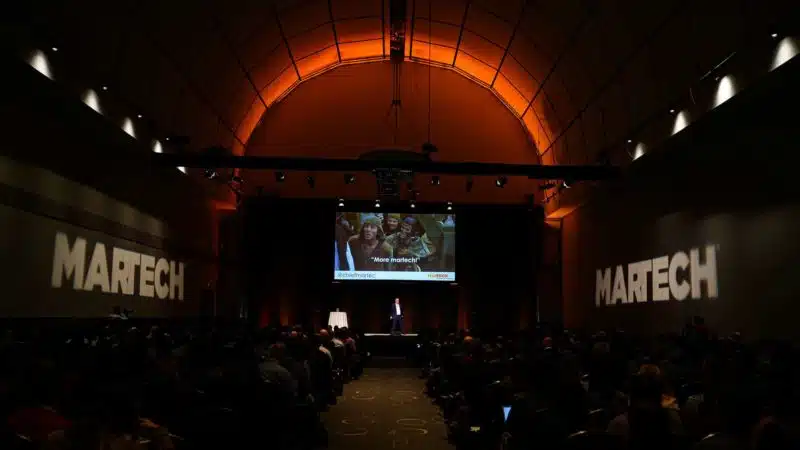Improve email performance with these AMP strategies
Dyspatch’s Matt Harris shares his experience using AMP to bring live, app-like experiences to customers’ inboxes.
“AMP is an innovative Google technology that allows recipients to interact with live content right inside an email,” said Matt Harris, CEO and cofounder of email creation platform Dyspatch, in a recent talk at the MarTech conference.
“Subscribers don’t need to click through to a web page with an amp email,” he added. “They take action directly in the inbox, and this isn’t just for Google. If your subscribers are using Yahoo or AOL, they can also receive these emails today, as well as hopefully, in the next year or two, Microsoft Outlook and Office 360.”
Because more and more email is opened on a mobile device, email is competing with apps and the channel needs to be more interactive and useful to customers, according to Harris.
Eight ingredients to boost email marketing engagement
Below are a number of ways Harris suggests that marketers can leverage AMP technology to improve email engagement and, by extension, customer retention and lifetime value.
Schedule an appointment
Scheduling and managing meetings or appointments was always a useful tool in the business world, where apps like Calendly became popular. With Covid-related safety concerns, making appointments also became more prevalent in retail, entertainment and traditional walk-in services.
“Now you’re able to get it all done in your inbox in a dynamic manner that’s convenient,” said Harris. “That’s super convenient.”
Embed a form
Email marketers are certainly aware of the added privacy regulations and consent protocols that can delay all kinds of customer interactions. Many of these processes include forms, and they can be embedded in the email.
“They transform the cumbersome process of clicking through a webpage, waiting for it to load, and then filling out and sending the form there, into something that’s quick and easy to complete right in the inbox,” said Harris. ”What I love about embedded forms is that everyone probably has a form on their website, or forms within an app, that they’re driving customers to today, and trying to get them to complete.”
Embedding the form in an email reduces the friction of this widespread customer experience.
Add to cart option
For ecommerce marketers, consider the potential in the phrase “inbox shopping.”
”The user can complete the entire checkout process directly inside an email,” Harris said. “Imagine if your customers could purchase directly from your email campaigns instead of having to click through to a webpage and then scroll through products.”
This capability would also greatly improve the effectiveness of abandoned cart emails.
Live commenting
By making emails more interactive and app-like, you can import many of the same kinds of engagement that attract customers and spread the word about your brand.
Harris points out that Google themselves reported a 500% increase in comment responses when adding AMP live commenting in emails on their Google Docs platform.
Surveys
Marketers who have found success with surveys on the website or in-app will want to try including them in emails.
“It boils down to no more click-throughs,” Harris said. “Five times more survey, completions and frictionless survey experience equals increased engagement and faster turnaround time on surveys.”
Pinned content
Visual discovery platform Pinterest teamed up with AMP to provide a way for users and marketers to pin content through email.
“The user can pin content within the email as well as load additional pins,” Harris explained. “Content is always recommended dynamically (in the email) based on what the users were browsing from one day to the next, so they’re serving up a highly personalized interactive email experience.”

Live carousel
No matter how ecommerce retailers present products on a webpage, they should try to adapt those successful designs for email. The breakthrough here is live updating, to get that web-like experience in an email.
Harris cited Booking.com as a good use case for live carousels in email. This way, the hotels that a customer sees in the email are definitely still available. This avoids unnecessary disappointments for travelers who see what they want in an email, online to find out on the website that it’s no longer available.
Live product lists
In a similar vein, marketing any kind of individual product in an email is risky if it isn’t updated live.
Harris mentioned clearance items as a good example of a kind of product that marketers would love to advertise more, because customers also get very interested in these items. And again, the only problem is that clearance items are unpredictable and can go out of stock without warning.
With a lot of these email techniques using AMP, marketers are able to stay in better communication with customers. And better communication ultimately leads to higher satisfaction and more sales.
Watch the full presentation from our MarTech conference below.
Contributing authors are invited to create content for MarTech and are chosen for their expertise and contribution to the martech community. Our contributors work under the oversight of the editorial staff and contributions are checked for quality and relevance to our readers. MarTech is owned by Semrush. Contributor was not asked to make any direct or indirect mentions of Semrush. The opinions they express are their own.
Related stories
New on MarTech